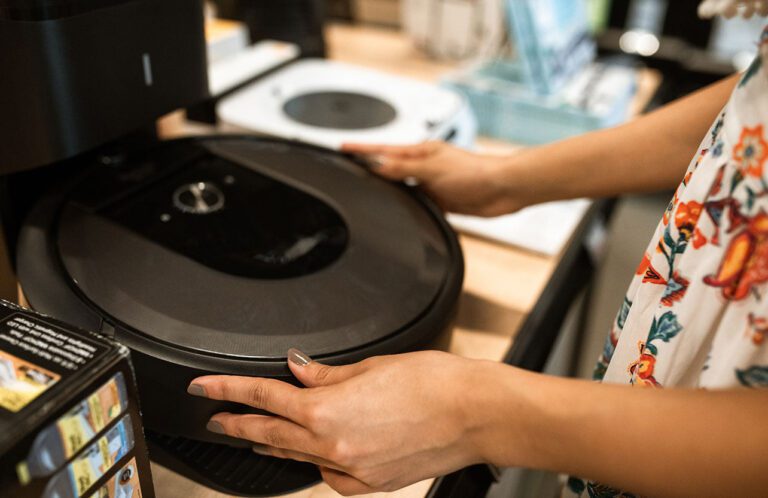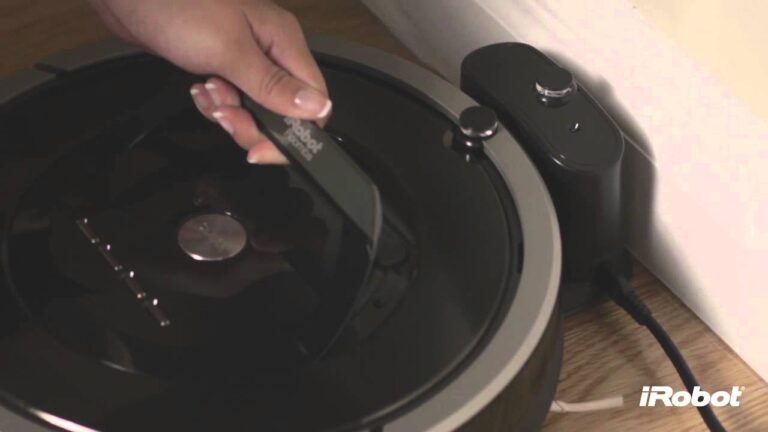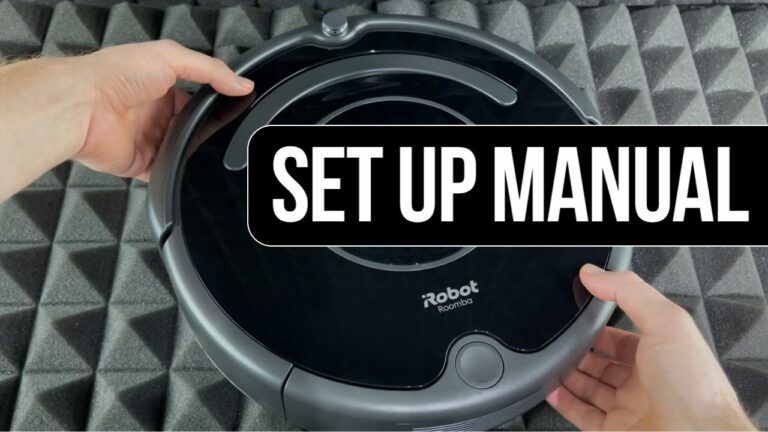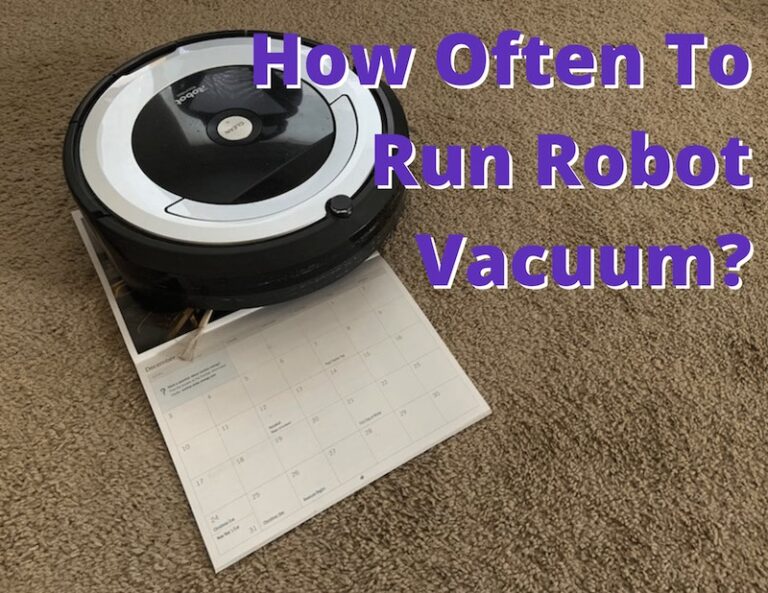How Robot Vacuum Cleaner Works?
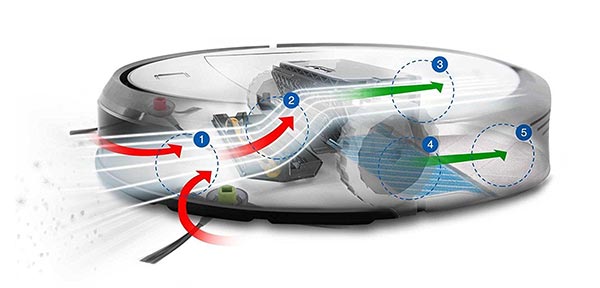
A robot vacuum cleaner works by autonomously navigating a space, sucking up dirt, dust, and debris, and returning to its base to recharge. These compact devices utilize sensors and algorithms to map and navigate the room, avoiding obstacles in their path.
Equipped with rotating brushes and suction, they efficiently clean floors by agitating and sucking up dirt particles. The collected debris is stored in a built-in container, which can be easily emptied. Offering a convenient and time-saving cleaning solution, robot vacuum cleaners have gained popularity in modern households.
With their advanced technology and effective cleaning abilities, these devices have become a valuable addition to the home cleaning routine.
Understanding The Basics Of Robot Vacuum Cleaner
Robot vacuum cleaners are becoming increasingly popular in modern households. These intelligent devices are specifically designed to automate the process of cleaning floors. They operate on the principle of autonomous navigation, using sensors and intelligent algorithms to move around a room and suck up dirt, dust, and debris.
Over the years, the technology behind these robotic cleaners has significantly evolved, resulting in more efficient and effective cleaning performance. Today, most robot vacuum cleaners come equipped with a variety of features and components that enhance their functionality. Some common features include programmable schedules, smart mapping capabilities, virtual wall barriers, and automatic recharging mechanisms.
With their compact size and ability to reach tight spaces, these devices are revolutionizing the way people clean their homes. So, if you’re tired of spending countless hours pushing a traditional vacuum cleaner, it might be time to consider investing in a robot vacuum cleaner.
Navigating And Mapping Capabilities Of Robot Vacuum Cleaner
Robot vacuum cleaners utilize advanced mapping technology to efficiently navigate and clean your home. Equipped with sensors, these smart devices can easily identify obstacles and changes in floor surfaces. By accurately detecting walls, furniture, and other objects, they avoid collisions while effortlessly moving around your space.
The mapping capabilities of robot vacuum cleaners enable them to create a virtual map of your home, ensuring systematic and thorough cleaning. These intelligent machines use various sensors, such as laser sensors and infrared sensors, to accurately determine their position and make real-time adjustments to their cleaning path.
With their mapping technology and navigation capabilities, robot vacuum cleaners take the hassle out of cleaning, leaving your floors spotless without any manual effort on your part. Experience the future of cleaning with these robotic wonders!
Cleaning Mechanisms And Efficiencies Of Robot Vacuum Cleaner
Robot vacuum cleaners use brushing and suction mechanisms to efficiently clean various floor types and spaces. These mechanisms work in combination, ensuring thorough and effective cleaning. The brushes remove dirt, dust, and debris from the floor surface, while the suction power collects and stores the particles in a dustbin.
Robot vacuum cleaners offer different cleaning modes, each with its own functionalities. These modes can be set based on the specific cleaning requirements of the user. For example, a spot cleaning mode focuses on a particular area, while a scheduling mode allows the robot vacuum cleaner to operate at specific times.
The efficiency of these cleaners varies depending on the floor type and the size of the space being cleaned. By evaluating their performance in different scenarios, users can determine the most suitable robot vacuum cleaner for their needs.
Battery Power And Charging Mechanisms Of Robot Vacuum Cleaner
The battery power of a robot vacuum cleaner determines its cleaning time. With a larger battery capacity, the robot can clean for a longer period without recharging. There are different charging mechanisms available for these vacuums. They can be charged through a docking station or by plugging them directly into a power source.
When the battery level is low, the robot will automatically return to the docking station to recharge itself. After recharging, it will resume cleaning from where it left off. This ensures uninterrupted cleaning and saves time. So, the battery capacity and charging options are crucial aspects of how a robot vacuum cleaner works efficiently.
Maintenance And Troubleshooting Tips For Robot Vacuum Cleaner
Robot vacuum cleaners are a convenient way to keep your floors clean with minimal effort. Cleaning and maintaining the robot vacuum cleaner regularly is essential for its optimal performance. One common issue with robot vacuum cleaners is that they may get stuck or trapped in certain areas.
To troubleshoot this, ensure that the pathways are clear and remove any obstacles that could hinder its movement. Another problem could be a dirty brush or clogged filters, which can affect the vacuum’s suction power. Regularly clean the brush and filters to prevent this issue.
Additionally, extending the lifespan of your robot vacuum cleaner can be achieved through proper care, such as emptying the dustbin after each use and cleaning the charging base regularly. By following these maintenance and troubleshooting tips, you can keep your robot vacuum cleaner working efficiently for years to come.
Integration With Smart Home Systems And Control Options
Robot vacuum cleaners have become increasingly popular due to their integration with smart home systems. With the ability to connect to various smart home devices, these cleaners offer convenient control options. Users can easily connect their robot vacuum cleaner to devices using voice control and mobile app integration.
This allows for remote access, enabling users to start, stop, and schedule cleaning sessions from anywhere. The integration of a robot vacuum cleaner with smart home systems offers several advantages. It allows for seamless automation and synchronization with other devices.
Users can create custom routines where the vacuum cleaner activates automatically when certain conditions are met. However, it’s important to consider the limitations of integrating a robot vacuum cleaner with smart home systems. There may be compatibility issues between different devices, and not all functionalities may be available through integration.
Ultimately, the integration of a robot vacuum cleaner with smart home systems offers convenience and control, making household cleaning a breeze.
Future Innovations In Robot Vacuum Cleaner Technology
Robot vacuum cleaners are set to see exciting innovations in the future. Advancements in navigation and mapping capabilities are predicted, allowing these devices to intelligently navigate and clean our homes. Through the integration of artificial intelligence, robot vacuums will be able to adopt advanced cleaning patterns, making them even more efficient.
There is also potential for significant improvements in battery power and efficiency, ensuring longer cleaning sessions without the need for frequent recharging. These developments will undoubtedly enhance the overall performance and usability of robot vacuum cleaners, making them an increasingly popular choice among consumers.
With these future innovations, the chore of vacuuming will become even more effortless, giving users more time to focus on other important tasks and activities. The future of robot vacuum cleaner technology looks promising, and we can expect to see even more exciting advancements in the years to come.
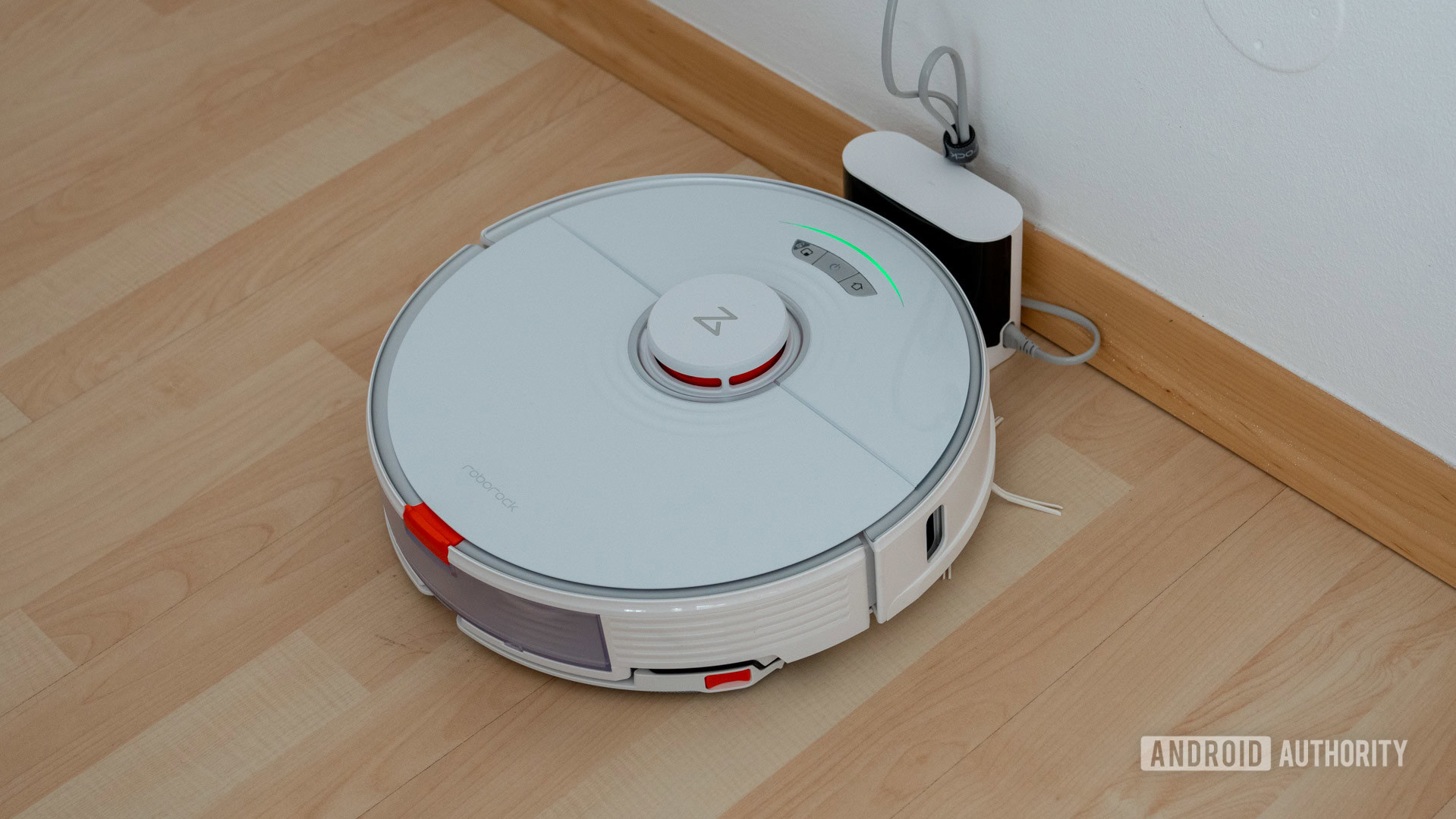
Credit: www.androidauthority.com
Frequently Asked Questions Of How Robot Vacuum Cleaner Works
How Do Robot Vacuums Work?
Robot vacuums work by using sensors and algorithms to navigate and clean your floors automatically. They have built-in sensors that help them detect obstacles and avoid falling off stairs. As they move around, they use brushes and suction power to pick up dust, dirt, and pet hair.
Some models also come with mopping features for hard floors. These smart vacuums have advanced algorithms that allow them to map and remember the layout of your home, ensuring thorough cleaning coverage. They can be programmed to clean at specific times or controlled remotely via a smartphone app.
Once the cleaning session is complete or the battery is low, the robot vacuum returns to its charging dock. With their convenience and efficiency, robot vacuums are a popular choice for those looking to save time and effort in maintaining clean floors.
How Do Robot Vacuums Know Where To Clean?
Robot vacuums use a combination of sensors and mapping technology to navigate and determine where to clean. These sensors include cameras, laser rangefinders, and even physical bumpers. The sensors scan the environment and create a map of the room, identifying obstacles and determining the layout.
Once the map is created, the robot vacuum uses algorithms to plan the most efficient cleaning path. It calculates the distance from each obstacle and adjusts its trajectory accordingly. Some advanced robot vacuums can even remember the layout of multiple rooms in a house.
Throughout the cleaning process, the sensors continuously gather data and adapt to any changes in the environment. This allows the robot vacuum to avoid obstacles, such as furniture or stairs, and focus on areas that require more attention. The technology behind robot vacuums allows them to efficiently clean your floors with minimal human intervention.
How Effective Are Robot Vacuum Cleaner?
Robot vacuum cleaners are highly effective in cleaning floors with minimal effort. With advanced technology, they navigate through obstacles and corners to collect dust, pet hair, and debris. These compact devices fit under furniture and reach tricky areas. They utilize brushes and suction to capture dirt, leaving your floors clean and tidy.
Some models feature mapping technology that enables efficient cleaning in multiple rooms. Additionally, scheduling options allow you to set automated cleaning cycles, ensuring a consistently clean home. Robot vacuum cleaners are ideal for busy individuals who want to save time and energy on household chores.
These devices are convenient, reliable, and efficient in maintaining your floors, giving you more free time for other activities.
Conclusion
The advent of robot vacuum cleaners has revolutionized the world of cleaning. These intelligent devices navigate our homes, diligently sucking up dust and debris, all while requiring minimal human intervention. Their intricate sensors and algorithms allow them to avoid obstacles and efficiently cover every nook and cranny. As we continue to embrace automation and smart technology, robot vacuum cleaners are a shining example of how innovation can make our lives easier and more convenient.
